It’s done. For the first time since 2011, cards have been deemed too powerful for Standard. Three cards join the likes of [casthaven]Stoneforge Mystic[/casthaven], [casthaven]Memory Jar[/casthaven], and [casthaven]Zuran Orb[/casthaven].
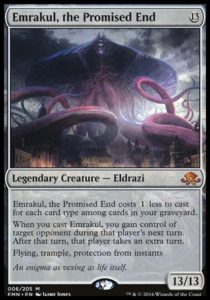
Ban’rakul
[casthaven]Emrakul, the Promised End[/casthaven] was immensely powerful in both grindy delirium decks and lightning fast [casthaven]Aetherworks Marvel[/casthaven] decks. She attacked from different angles and essentially won the game when cast, sometimes as early as turn four. Given the format’s lack of graveyard hate and artifact removal and her resilience against most forms of removal, there was little way to fight her. Wizards tried to create a worthy successor to [casthaven]Emrakul, the Aeons Torn[/casthaven]. They succeeded.
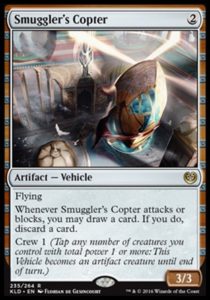
New Permanent Types are Hard
[casthaven]Smuggler’s Copter[/casthaven] was a necessity in every creature-heavy deck, stifling format diversity. As with Emrakul, it was resilient against most forms of removal, making it difficult to deal with. Its generation of virtual card advantage made an unanswered Copter a lethal threat, much like a two mana titan. [casthaven]Smuggler’s Copter[/casthaven] was a cheap and powerful colorless card, allowing it to go into any deck, much like previous offenders, [casthaven]Umezawa’s Jitte[/casthaven] and [casthaven]Skullclamp[/casthaven]. All three are examples of how hard it is to balance new permanent types: get them too weak, and you have Curses or Arcane (which excite few people and don’t return); get them too strong and you at least have a neat mechanic.
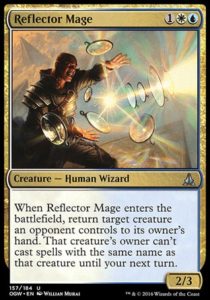
Collected Company Calls Him Home
[casthaven]Reflector Mage[/casthaven] is much less powerful than it was when [casthaven]Collected Company[/casthaven] was around, but it’s still a powerhouse (and likely to get much stronger, now that Jeskai combo/control with [casthaven]Saheeli Rai[/casthaven] + [casthaven]Felidar Guardian[/casthaven] is about to become a thing). With Wizards shaking Standard up, I understand why they’d see fit to neuter WU Flash: it was already a Tier 1 deck and the only one that could easily weather the loss of [casthaven]Smuggler’s Copter[/casthaven] (and stood to benefit from Emrakul’s banning). [casthaven]Reflector Mage[/casthaven] died so that Standard could be balanced without a WU deck at the top of the pyramid.
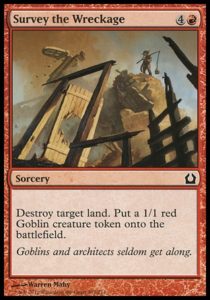
Have We Hit Bottom?
I don’t have Wizard’s numbers, but 2016 seems to have been a rough year for Magic. Oath of the Gatewatch did what it could to make up for Battle for Zendikar’s shortcomings (notably the unbalanced Limited format and the Battle Lands allowing for an exorbitantly expensive Standard). However, it also featured [casthaven]Thought-Knot Seer[/casthaven][casthaven][/casthaven] and [casthaven]Reality Smasher[/casthaven], leading to one of the most lopsided Pro Tours ever and Eldrazi Winter, an era which saw the seeming decline of Modern and the death of the Modern Pro Tour.
Shadows Over Innistrad was another lackluster Limited format, which was again helped by Eldritch Moon, but so came [casthaven]Emrakul, the Promised End[/casthaven] and the second of our three bannings. The summer also brought a slew of supplemental products and a three-month-long spoiler season, sapping excitement for and interest in Magic’s many offerings.
Kaladesh brought with it a refreshing new optimistic world, and while this author might not have enjoyed the Limited format, it was beloved by many and a definite change of pace from previous offerings. Sure, there was [casthaven]Smuggler’s Copter[/casthaven] and [casthaven]Aetherworks Marvel[/casthaven], but the Pro Tour final match was a [casthaven]Torrential Gearhulk[/casthaven] mirror, proving the haters wrong.
There were a bunch of hiccups, changes, and take-backs along the way as well: Wizards banning a bunch of judges for Oath of the Gatewatch spoilers, Wizards abruptly changing then un-changing the benefits of platinum status, Wizards reversing the semiannual Standard rotation after its first occurrence, and Wizards creating the Standard Showdown to help boost Standard participation.
So, yeah, 2016 had some missteps. Now, we’re starting 2017 off with three Standard and two Modern bannings? What gives?!
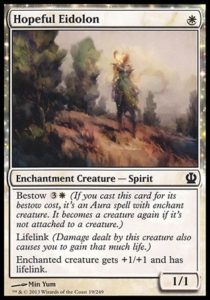
Symptoms of a Disease Running its Course
Ultimately, I’m optimistic about 2017.
Sure, 2016 seemed to have more than its fair share of problems, but Magic: the Gathering is a game which pushes its boundaries with every product it releases. Magic is constantly breaking new ground, walking the tightrope between playing it too safe (and losing players to boredom and apathy) and playing it too crazy (and losing players to unbalanced formats or incomprehensible complexity). The game has been mostly successful in walking this razor’s edge for the last six years, seeing the game’s popularity only grow. It’s inevitable that some designs wouldn’t hit their mark.
I respect Magic’s constant need to innovate and acknowledge that this year was not a failure: it had some great Limited formats, it had diverse Standard environment, it had supplemental products for many different and wide audiences, and it saw Wizards become more transparent and better at communicating with its audience. The year saw [casthaven]Kaya, Ghost Assassin[/casthaven] and [casthaven]Saheeli Rai[/casthaven] increase the diversity of the game, both in its suite of characters and in their creators.
We’re in an era where Luis Scott-Vargas will be commenting year round (after an astonishing year), where Vintage and Legacy are dynamic formats, changing swiftly as new cards like [casthaven]Paradoxical Outcome[/casthaven] and [casthaven]Eldrazi Displacer[/casthaven] carve out new archetypes. Magic still has a whole lot going for it.
Magic is (for many of us), still the greatest game in the world. It takes more than a rocky year to kill the game. Magic survived [casthaven]Necropotence[/casthaven]. It survived Urza’s block. It survived Ravager Affinity, Caw Blade, and Chronicles—it can definitely survive this.
I think that these bannings are, as the header says, symptoms of a disease running its course. Wizards is trimming some mistakes before we’re stuck with them (particularly considering that BfZ block was designed to rotate out in a few months). These bannings are like the Caw Blade bannings: happening right before things get a whole lot better. Years ago, when Wizards designed Amonkhet and the rest of 2017’s sets, they applyied the lessons they learned from the shortcomings of 2016 designs. They have a vested interest in improving, and they have only gotten better at communicating with their audience. I hope and believe that 2017 will be a great year for the game and for its players.
…and if not, well, there’s always cube for until times get good again.
And, as always, thanks for reading.
—Zachary Barash
Zachary Barash is a New York City-based game designer. He’s played Magic since 1994, but went on a long hiatus, like most folks. He’s currently pursuing his MFA in Game Design at NYU and designs for Kingdom Death: Monster, a game that is most definitely not Magic.

